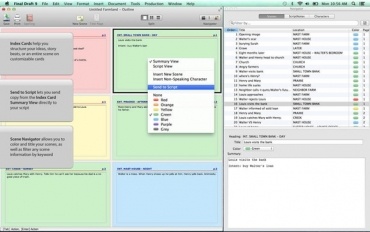

- #Final draft 9 reviews how to
- #Final draft 9 reviews license
Customer Serviceįor questions about using the Copyright.
#Final draft 9 reviews how to
Translation and Other Rightsįor information on how to request permission to translate our work and for any other rights related query please click here.
#Final draft 9 reviews license
Share electronically via secure intranet or extranetįor most Academic and Educational uses no royalties will be charged although you are required to obtain a license and comply with the license terms and conditions.Ĭlick here to obtain permission forReview of the Final Draft Analysis of Supplemental Treatment Approaches of Low-Activity Waste at the Hanford Nuclear Reservation: Review #3. Use in print or electronic course materials and dissertations. Republish or display in another publication, presentation, or other media. The National Academies Press and the Transportation Research Board have partnered with Copyright Clearance Center to offer a variety of options for reusing our content. Environment and Environmental Studies -Waste Disposal and Clean Up. Final Draft is considered to be an industry standard, so it was the first screenwriting program I considered using. Ive never written an actual screenplay before, but as a novelist and storyteller, I was curious about the process. Environment and Environmental Studies -Radiation Admittedly, I started using Final Draft 9 on a whim. The third of four, this report provides an overall assessment of the FFRDC team’s final draft report, dated April 5, 2019. Section 3134 of the National Defense Authorization Act for Fiscal Year 2017 calls for a Federally Funded Research and Development Center (FFRDC) to conduct an analysis of approaches for treating the portion of low-activity waste at the Hanford Nuclear Reservation intended for supplemental treatment. The chemically complex and diverse waste is difficult to manage and dispose of safely. Presently, 177 underground tanks contain collectively about 210 million liters (about 56 million gallons) of waste. Production processes generated radioactive and other hazardous wastes and resulted in airborne, surface, subsurface, and groundwater contamination. During 45 years of operations, the Hanford Site produced about 67 metric tonnes of plutonium-approximately two-thirds of the nation’s stockpile. In 1943, as part of the Manhattan Project, the Hanford Nuclear Reservation was established with the mission to produce plutonium for nuclear weapons. 
Division on Engineering and Physical Sciences.Division of Behavioral and Social Sciences and Education.






 0 kommentar(er)
0 kommentar(er)
